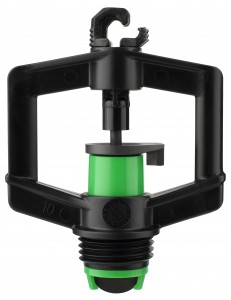The Impact Of Drought On Vegetable Production
 Water is a precious commodity. Just ask California growers trying to navigate through a drought that is said to be one of the worst since the 1500s.
Water is a precious commodity. Just ask California growers trying to navigate through a drought that is said to be one of the worst since the 1500s.
In March, the California Farm Water Coalition upgraded its estimate of acres growers will leave idle this year to 800,000, up from 500,000, because of a lack of water. According to USDA’s Drought Monitor, the drought in 95% of the state is being called “Severe” to “Exceptional.”
What can California and growers in the West do? Unfortunately, options are limited. Conservation is an obvious solution — and most growers in the West are already well down that road. During the last couple of decades, many have turned their attention to drip irrigation, which is considered to be the most efficient way to water crops.

 Another season has passed, and Bob McKellip is happy to report that his second year of utilizing
Another season has passed, and Bob McKellip is happy to report that his second year of utilizing 